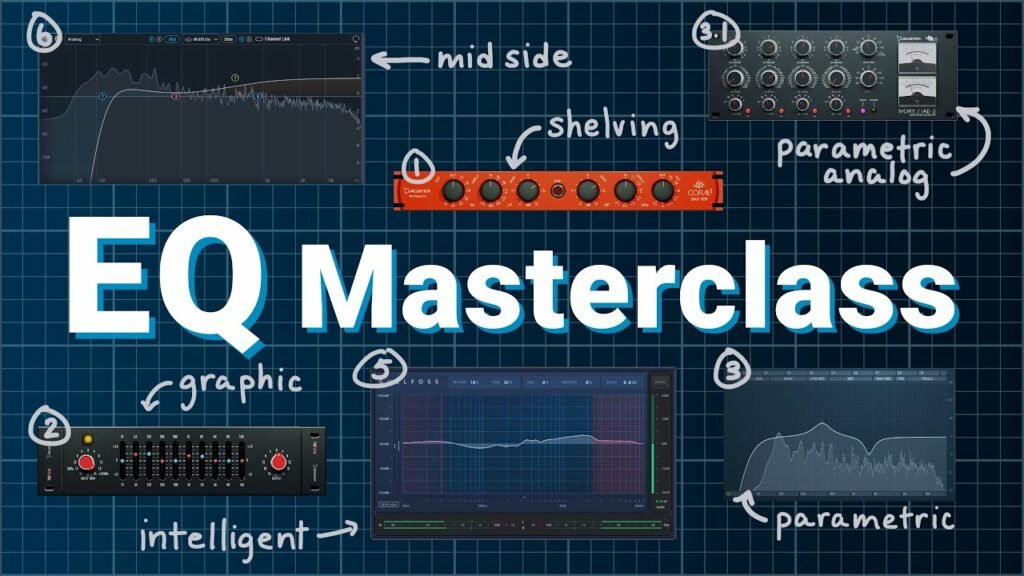
in this tutorial we ’ll take a look at all the different types of eq and try to figure out what’s stylish for your requirements you ’ve probably seen dozens or indeed hundreds of different types of eq both analog tackle and software and in this videotape i ’m going to be breaking it down into a many different orders we ’re going to look at deferring eqs graphic or graphical eqs parametric eq dynamic eq direct phasemid-side eq and also some intelligent or automatic equalizers the purpose of this videotape is to partake a bit of information about those with some audio exemplifications but it really is designed to clarify and simplify the decision making process for you but i wo n’t be telling you exactly which one to use and which one not to use because at the end of the day if it sounds good also it's good but i know that some of the eqs are surely more suited to some tasks than others are so with all that said stop’s just get right
into it we ’ll start with the most simple type which is the shelving eq and these could be devoted plugins or tools which only feature deferring pollutants or it could be part of a larger say-so parametric eq there’s generally a low and a high shelf sludge and they let you elect a frequence which you can see just then which can either be the center frequence or the arrestment frequence depending on how the sludge is designed they also let you elect a sludge pitch like this but more on that in just a moment and eventually they let you elect an quantum of gain to either add or remove from that shelf one of the stylish ways to learn is simply to hear to how these pollutants sound so if i add some gain to this high frequence shelf you should hear the top end of the cello and piano come a lot more prominent and the blend opens up (Music) and the same is true if i were to remove gain it becomes darker and this is what these deferring pollutants are material entire composites masters or motorcars you can relatively dramatically change the sound in still a natural way and this brings me right onto the pitch controls then so if you choose quite a steep pitch you ’ll presumably notice this corner or cut-off frequence more but if you make it a nice gentle pitch like this you can sort of cock a whole blend over or down in a certain direction and it should sound relatively natural frequently you can find these deferring features on standalone processors without any kind of graphical display but you can see then we've a low frequence shelf as indicated by these this jotting then and we've a high frequence shelf then and if i were to elect a frequence and add some gain you can see on this visualizer then that again you have a analogous kind of shelf i prefer to use plugins like this without the graphical display because when deferring you simply do what sounds stylish and not what looks stylish on the display (Music) the coming type is the graphic eq which might sound like a strange name given that we do n’t have a digital analyzer display these came veritably popular in the 1960s and 70s before there were plugins on computer defenses this simple but ingenious design actually allows you to graphically see an eq wind this bone then's modeled after an api 560 which is an incredibly notorious and popular eq indeed to this day it’s awful and this has 10 bands but it’s veritably common to see graphical eqs with numerous further indeed you know 24 30 bands and it all depends how important resolution you need for the task you can see that the frequentness are fixed 31 hertz 500 hertz 2 kilohertz and the only choice you have is to boost or devaluate a certain band but one of the
effects i really wanted to punctuate then's that this is the first eq where you could draw like this which takes a while with a mouse but remember you ’d be using your fritters and just conforming these little tabs in the analog sphere and you can see that this wind then's imaged on this display then so it’s the first time you could actually see an eq wind numerous of them feature what’s called a commensurable q design which means that when you do small boosts it’s a veritably broad bandwidth so it sounds veritably natural but the more you boost or devaluate the steeper the sludge becomes so it sort of makes some graphic eqs suitable for room correction not this bone in particular i ’d say but bones with numerous further bands you can actually use these to notch out certain issues or boost other areas in your room where you know you have problems anyway that’s enough the proposition let’s get into some listening so Pulse the signal a little to take 125 and reduce it a little and I can take thetop end and boost that as well and let’s hear to a ahead and later so i was presumably boosting a little bit too much it got relatively
bright but you can tell these are great for tone shaping especially during shadowing and using the analog tackle performances of these they ’re veritably easy to use you can acclimate them with your fritters they sort of snap in or click into place and they ’re also veritably easy to recall and reset to zero at the end of a session the fixed center frequentness presumably feel like a big debit if you ’ve noway used one of these eqs and it clearly sounded like a big problem to me when i started i wanted further control, but what makes them so amazing is that if you're tracking an instrument, I'm just tracking bass and upsa lot at 63 hertz i like the tone but latterly on i decided i did n’t actually like that but it’s formerly published it’s formerly recorded because the boost and cut geste on these feathers of eqs is generally identical it means that i can just load another eq or run it through the same eq again and i can veritably fluently exactly reverse it and get back to the original tone and this sounds exactly the same as the original one i ’ve indeed gone so far as to fully uttermost out the boosts and cuts and check them with the phase cancel and they do fully cancel out generally you do n’t really have the option to go back and undo that but with these kind of eqs because the center frequentness are fixed and so is the q value or it’s a kind of commensurable q you can actually sort of undo what you did before which is kind of handy since we ’re talking about analog tackle it makes sense to talk about deformation and achromatism so numerous of these plugins have modeling





